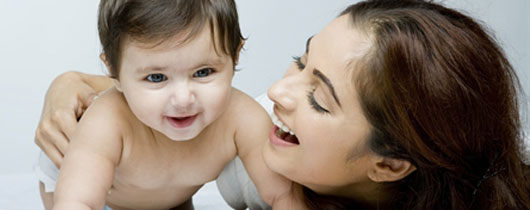
One day during your baby's first two months, you will gaze into the crib and see a face that suddenly bursts into a bright smile. Maybe the baby will "smile" all over, legs kicking and arms waving like a windmill, wiggling body and head. Your baby, now living up to the legend of a bundle of joy, may even punctuate the smiles with a few gurgles and coos.
That first smile is a marvelous, happy moment for the baby's parents, who until now may have primarily thought of the baby as a hungry mouth to feed and a wet bottom to change. That a smile you see and those joyful noises you hear are so spontaneous that at first you may not believe they are genuine.
You will soon see there is pattern to the baby's smiles and that they are a definite response to the world, especially to human faces. You will quickly learn that you can cause a smile by your own behavior. A visit to the crib, a few words, a tickle may cause the baby to grin widely and go into the windmill act.
At first, the smiles that emanate from your baby's crib aren't directed to you. A baby beams at nearly every human face, even a strange or grumpy one. True smiles of recognition don’t come until perhaps the fourth month.
Nevertheless, that first smile signals a new and challenging state of development for your fast-changing infant, who now is not only ready for social interaction and stimulation, but needs it as well.
The factors that determine a child's I.Q. are easy to argue about. It is known that children who score high on intelligence tests have had (and enjoyed) a great deal of parental stimulation in infancy. Even when they were tiny (too young) seemingly, to understand their mothers and fathers talked to them, smiled at them, played with them, listened to them, imitated them, responded to them constantly. These babies had many things to look at, listen to, and explore. Even when parents were out of the baby's sight, they chatted, cooed, and sang to the baby. Obviously, these efforts paid off.
Babies are really no different from the rest of us; they too learn from the people around them. Lying helplessly in a crib, a baby offers a smile as an invitation for attention, a way to communicate with you. If that attention is given, the smile is reinforced. The baby smiles again and then moves on to new forms of interaction and learning. If the smile and those that follow are ignored, a baby soon stops smiling and soon stops reaching out to the world.

